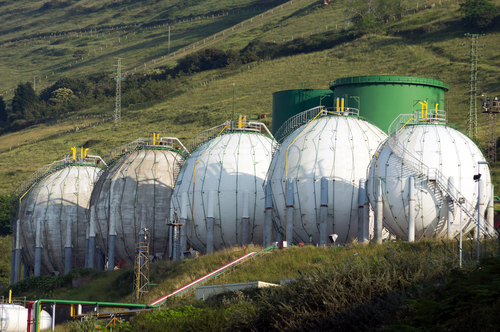 |
Q & A: Oil and Gas Tank VOC Emissions Control NSPS Rule Changes
Q: What is the “alternative emissions limit” included in the new rule?
A: There are two aspects to the alternative emissions limit:
- Meet the requirements of the 2012 rule and reduce VOC emissions by 95 percent, or
- Demonstrate that the tank’s VOC emissions have dropped to less than 4 tons per year without emission controls.
The second alternative is meant to take into consideration that over time, most tanks see declining emissions and thus the alternative offers owners/operators the opportunity to switch control equipment on tanks from low-emitting tanks to tanks with higher emissions. The rule requires that:
- Owners/operators must document that the tank’s monthly emissions are below 4 tons per year for at least 12 consecutive months,
- Owners/operators must reevaluate uncontrolled emissions on a monthly basis, and if emissions increase above the 4-ton limit, they have 30 days to meet the 95 percent requirement. If the increase was caused by the fracture or refracture of a supplying well, the 95 percent requirement must be met as soon as liquids from that well are routed to the tank.
- Tanks that have been removed and then returned to service also have similar requirements.
Join us on May 19 for a live webinar on Oil and Gas Industry Compliance. Learn How the recently promulgated Colorado LDAR requirements go beyond the federal requirements and much more. Register Now.
Q: What changes in the rule are related to emissions control equipment?
A: The EPA clarified that the new changes align the protocol that emissions equipment manufacturers must use in testing the controls with the testing protocol required in the 2012 air toxics regulations. This clarification means that owners/operators are allowed to reduce emissions using manufacturer-tested emissions control device models (combustors) that have been demonstrated to reduce a storage tank’s VOC emissions by 95 percent, instead of requiring the controls to be field performance tested.
In addition, tank owners/operators are allowed to use control devices that are designed to reduce emissions by 95 percent, while the EPA continues to review issues presented in the reconsideration petitions. The EPA anticipates addressing this issue by the end of 2014.
Join us on May 19 to hear from a seasoned environmental engineer with extensive background in dealing with these regulations in both the private sector and the consulting industry.
Q: Did the EPA make any changes to the monthly monitoring requirements for tanks that already have emissions controls installed?
A: At this time, the EPA is still considering petitions that asked for reconsideration of the requirements for monitoring due to the often remote siting of wells and sites, and will address the issue by the end of 2014. In the interim, the EPA has streamlined the compliance and monitoring requirements to include monthly inspections of covers, closed-vent systems, and control devices. According to the EPA, this action will help to minimize VOC emissions by encouraging prompt repair of leaks while requiring “little or no specialized monitoring training or equipment.”
Q: What are the annual reporting requirements addressed in the changes?
A: The 2012 NSPS required owners/operators to submit an annual report that included well completions, as well as information on storage tanks and any other equipment that was installed or modified during the reporting year. The report was required to be certified by a senior company official and submitted within 30 days. In response to petitions that argued 30 days was not enough time to both compile the report and obtain the required signature, the EPA changed the requirement to provide owners/operators 90 days to complete and submit the report.
